The Mount Kailash pilgrimage, often referred to as the "Heavenly Ascent," is a transformative journey that attracts devotees from various faiths. This challenging trek, spanning over 10 days, leads pilgrims through rugged terrain and high altitudes, culminating in a sacred circumambulation known as Kora around the revered peak. As participants navigate the spiritual landscape, they engage in deep reflection, seeking purification and enlightenment. For those willing to undertake this transformative journey, the rewards can be profound, offering a connection with the divine and a profound sense of inner peace. Embark on this spiritual odyssey, and discover the true essence of the Heavenly Ascent.
Key Points
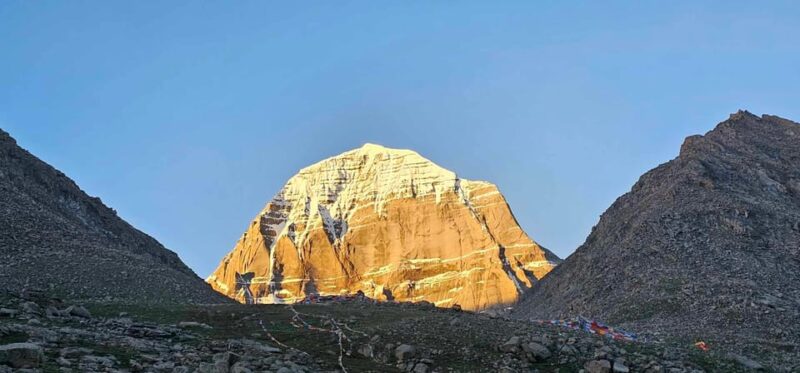
- Mount Kailash, a sacred peak in Tibet, is revered by Hindus, Buddhists, Jains, and Bonpos as the abode of the divine.
- The challenging 10-day pilgrimage to circumambulate the mountain is believed to cleanse the soul and bring salvation.
- The journey involves traversing rugged terrain, steep passes, and high altitudes, requiring extensive preparation and physical fitness.
- Accommodation along the route is in guest houses, with transportation primarily by bus equipped for the demanding conditions.
- The spiritual significance of the pilgrimage lies in the connection with the divine and the potential for inner transformation.
Overview of Mount Kailash
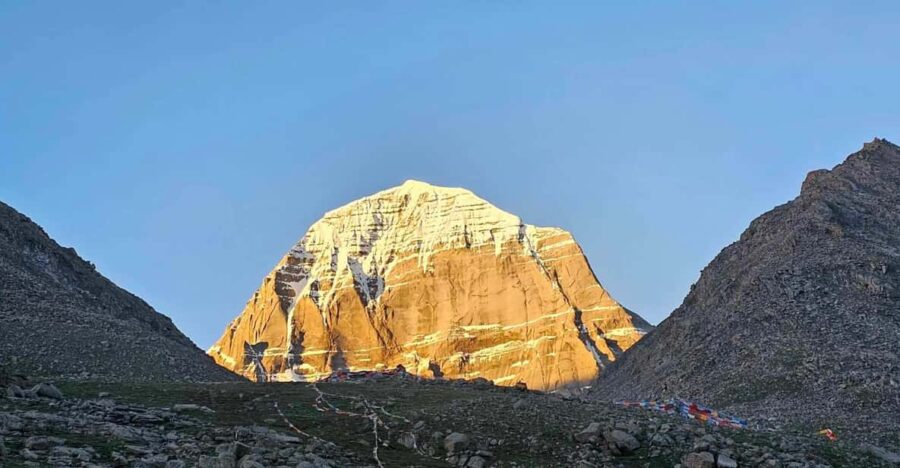
Mount Kailash’s spiritual significance has captivated the hearts and minds of pilgrims for centuries. This sacred peak in Tibet is revered by Hindus, Buddhists, Jains, and Bonpos alike.
The challenging pilgrimage route, known as the Kora, involves a 3-day circumambulation around the mountain and a visit to the holy Lake Manasarovar. Trekkers face rugged terrain and high altitudes, but the journey is considered a profound spiritual experience.
For many, completing the Kora is a lifelong dream, as it’s believed to cleanse the soul and bring salvation. The pilgrimage’s combination of natural beauty and religious significance makes it a truly awe-inspiring destination.
You can also read our reviews of more tours and experiences in Tibet.
Challenging Pilgrimage Journey
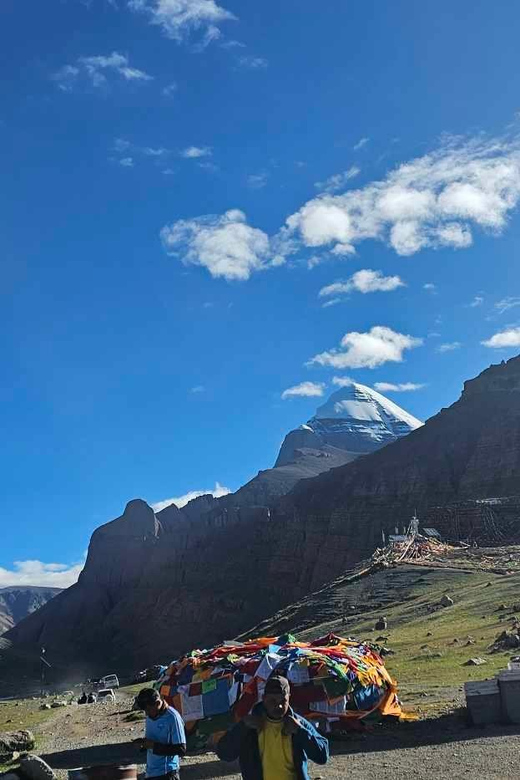
The pilgrimage journey to Mount Kailash is undoubtedly a challenging endeavor, testing the physical and mental fortitude of even the most experienced trekkers.
Spanning over 10 days, the trek traverses rugged terrain, steep passes, and high altitudes, reaching up to 5,600 meters.
Pilgrims must be prepared for the demanding conditions, which include freezing temperatures, thin air, and the risk of altitude sickness.
The circumambulation around the sacred mountain is a grueling 3-day affair, requiring stamina and determination.
Yet, for those who undertake this spiritual quest, the rewards are immense, as they connect with the divine and find inner peace amidst the breathtaking Himalayan landscape.
Pilgrimage Route and Itinerary
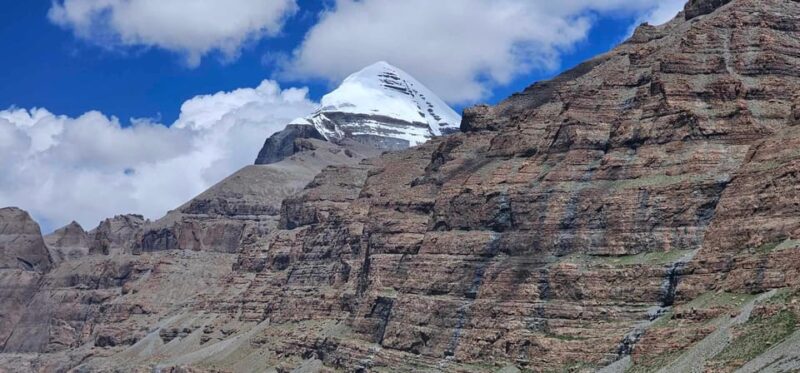
The pilgrimage to Mount Kailash typically commences from Kathmandu, Nepal, offering participants a comprehensive 10-day itinerary.
The journey starts with a trek from Syabrubesi to Kerung, followed by a drive to Saga and Manasarovar.
Pilgrims then travel to Darchen, the base camp, before embarking on a challenging three-day circumambulation of the sacred mountain.
The route includes crossing the Dolma-La Pass at an altitude of 5,600 meters.
After completing the kora, the group returns to Saga and Kerung before finally arriving back in Kathmandu.
Throughout the pilgrimage, accommodation is provided in guesthouses, and transportation is by bus, with oxygen cylinders and down jackets available as needed.
Pricing and Booking Information
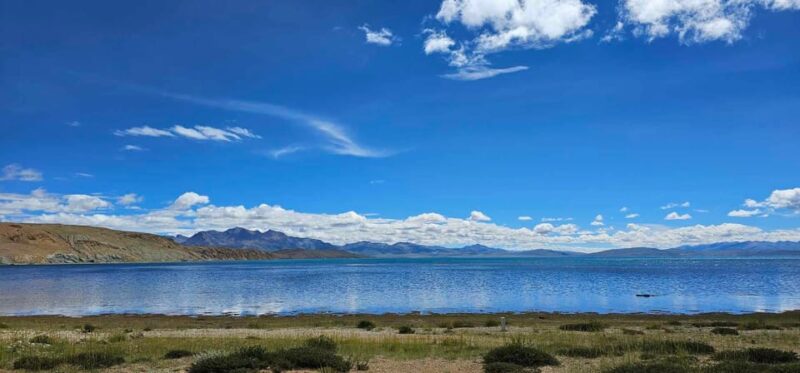
A pilgrimage to Mount Kailash can cost from $4,999.00 per person. This price includes transportation, accommodation, meals during the journey, group visa, and trekking equipment.
Booking options allow travelers to reserve now and pay later, with free cancellation up to 24 hours in advance. The tour covers a 10-day itinerary, starting from Kathmandu, Nepal, and traversing through various locations in Tibet.
Accommodation is provided in guest houses. Oxygen cylinders and down jackets are also available.
However, certain individuals, such as children under 10, wheelchair users, and those prone to altitude sickness, aren’t recommended for this challenging pilgrimage.
More Great Tours NearbyAccommodation and Transportation Arrangements

Accommodation during the Mount Kailash pilgrimage includes one night in Syabrubesi and eight nights in various guest houses throughout Tibet.
Transportation is primarily by bus, with travel from Kathmandu to the Nepal-China border and throughout Tibet. Oxygen cylinders are provided in each bus to help mitigate the effects of high altitude.
Down jackets are also available on a returnable basis to keep pilgrims warm during the journey. The buses are well-equipped to handle the challenging terrain, ensuring a safe and comfortable experience for all participants.
Guidelines for Participants
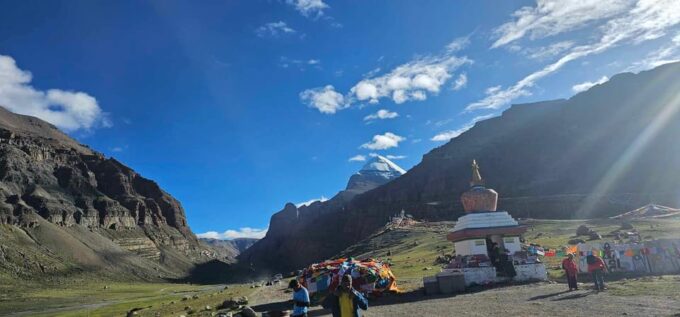
While the Mount Kailash pilgrimage offers a profound spiritual experience, it’s not suitable for everyone.
Children under 10, wheelchair users, and individuals prone to altitude sickness shouldn’t attempt the journey. Infants and the elderly may also face challenges.
Travelers must bring appropriate gear like comfortable shoes, warm clothing, and a first-aid kit. Drones, alcohol, and military-style attire are prohibited.
Participants should be prepared for the demanding terrain and high altitudes. Following these guidelines helps ensure a safe and meaningful pilgrimage to this sacred mountain.
Spiritual Significance of the Pilgrimage
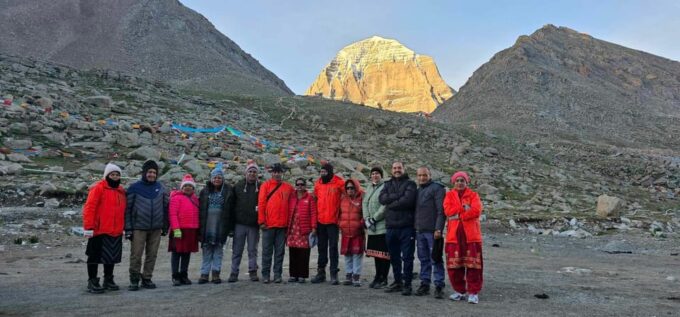
Mount Kailash holds immense spiritual significance for devotees of several faiths.
Hindus revere it as the abode of Lord Shiva, while Buddhists believe it to be the celestial home of Demchok, the supreme deity. Jains consider it the site where their first Tirthankara, Rishabhadeva, attained enlightenment. The Bonpo faith, the indigenous religion of Tibet, also holds the mountain sacred.
The challenging pilgrimage to circumambulate the peak is believed to cleanse one’s sins and bring spiritual enlightenment. Devotees undertake this arduous journey, known as the Kora, as an act of devotion and a means to achieve inner peace and spiritual transformation.
Preparing for the Heavenly Ascent
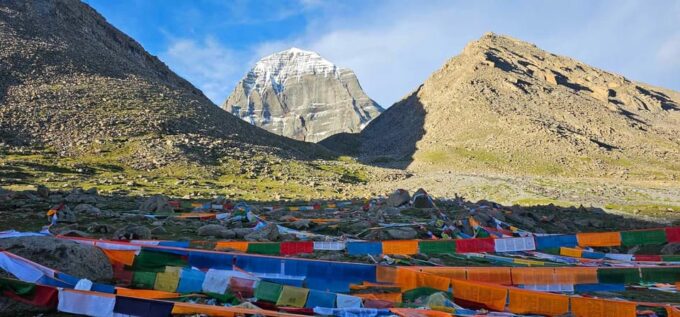
Undertaking the Mount Kailash pilgrimage requires extensive preparation to ensure a safe and successful journey. From securing necessary permits and visas to packing the right gear, every detail must be meticulously planned. Travelers should familiarize themselves with the terrain, climate, and high-altitude demands of the trek. Proper acclimatization is crucial to mitigate the risks of altitude sickness. Plus, pilgrims must adhere to the local customs and cultural etiquette to respectfully engage with the sacred sites. By heeding the following guidelines, adventurers can embark on their heavenly ascent with confidence and reverence.
| Key Preparation Steps | |
|---|---|
| Obtain Permits/Visas | Pack Suitable Gear |
| Research Terrain/Climate | Acclimatize Properly |
Frequently Asked Questions
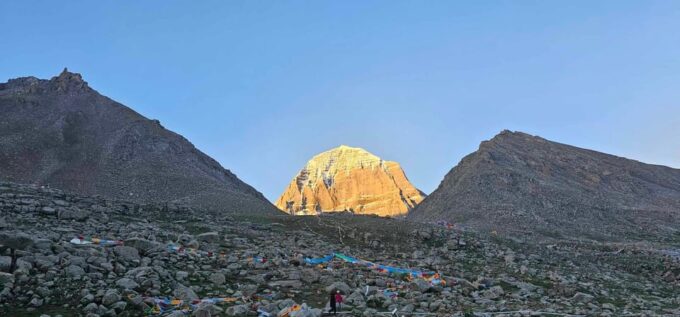
Is Altitude Sickness a Major Concern During the Pilgrimage?
Altitude sickness is a major concern on the Mount Kailash pilgrimage. The trek includes high elevations, reaching over 18,000 feet, which can cause altitude-related illnesses. Proper acclimatization and taking precautions are essential for a safe and successful journey.
Can I Extend My Stay Beyond the 10-Day Itinerary?
Yes, you can extend your stay beyond the 10-day itinerary. The tour package offers flexibility, and you can arrange for additional nights at your own expense. However, this may require adjustments to the overall travel plan.
Are There Any Special Cultural or Religious Customs to Observe?
There are several cultural and religious customs to observe during the Mount Kailash pilgrimage. Visitors should avoid pointing their feet towards the mountain, circumambulate it clockwise, and follow the local Tibetan customs with respect and reverence.
What Is the Best Time of Year to Undertake the Pilgrimage?
The best time to undertake the Mount Kailash pilgrimage is from May to September when the weather is milder. Trekking during the summer months provides the most comfortable conditions for the challenging journey around the sacred mountain.
Are There Any Medical Facilities Available Along the Route?
There are limited medical facilities along the Mount Kailash pilgrimage route. Travellers should bring their own basic first aid supplies and be prepared to access medical care in the nearest towns if needed during the challenging trek.
Recap
The Mount Kailash pilgrimage is a transformative journey that offers spiritual seekers a chance to connect with the divine. Navigating the rugged terrain and high altitudes, participants engage in deep reflection, seeking purification and enlightenment. Through the sacred Kora circumambulation, they experience profound inner peace, making the "Heavenly Ascent" a truly life-changing experience for devotees of various faiths.
You can check availability for your dates here: